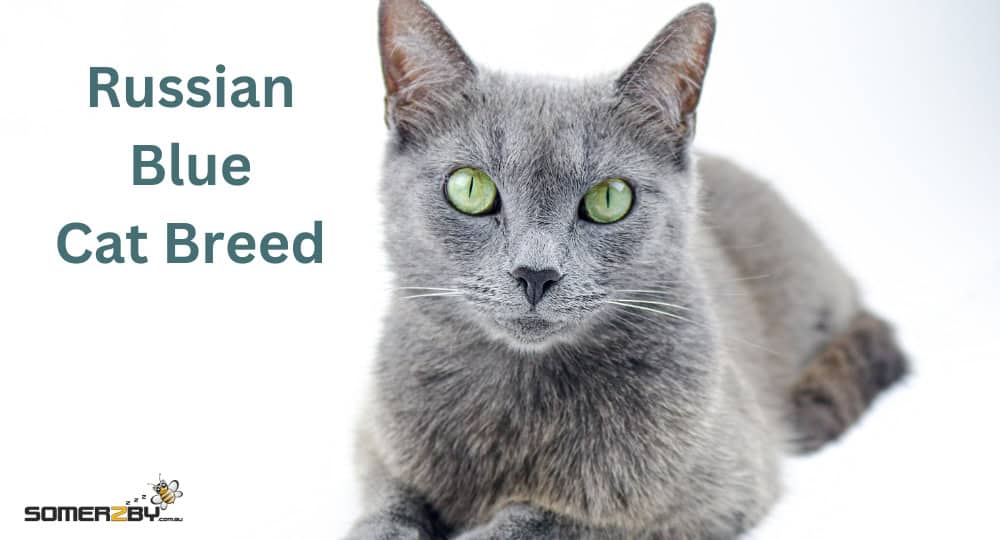Cats
Russian Blue Cat Breed
Russian Blue cats make great pets, due to their gentle and loyal nature. Their thick, blue fur and long body gives them an elegant appearance.
Read more about this beautiful breed in our blog below:
table of contents
Variations
There are three variations of the Russian cat breed – blue, black and white.
Russian Blues are by far the most popular. They appear grey upon first glace but are actually blue with a silver sheen.
The Russian Blue’s coat is very similar to the blue British Shorthair’s coat.
There is also a long-haired version of the Russian Blue cat called the Nebelung. This breed is rare.
Appearance
Russian Blues have a unique and regal appearance.
They are medium sized with a long body, legs and tail. They have small paws that they walk on very softly. Their head is a triangular shape.
Their short coat is very soft and thick, designed to keep them warm in the cold Russian winters.
Its plushness can make the cat appear larger than it is.
Their double coat has two layers – an undercoat that is dense and guard hairs (the top coat) that are silvery and give the Russian Blue its distinctive colour.
Their pointed ears are wide at their base. Their head between their ears is flat.
Eye Colour
They have stunning green eyes that are large and wide apart. They are almond shaped, giving them a sweet expression.
Their kittens are born with yellow eyes that change as they grow.
The kittens are also often born with ‘ghost stripes’. These markings make them look like a tabby.
They will disappear as the kitten grows up, slowly fading until they are completely gone.
Personality
Russian Blues are a very gentle and undemanding breed. This makes them a suitable pet for families with younger children, older people and people with special needs.
They are cautious around strangers, making them appear shy. They can take a while to warm up to individuals.
They prefer to carefully observe new people and learn about them from a distance.
However, once they are comfortable around you, they can be very affectionate. When they bond with a human, they are very loyal and loving.
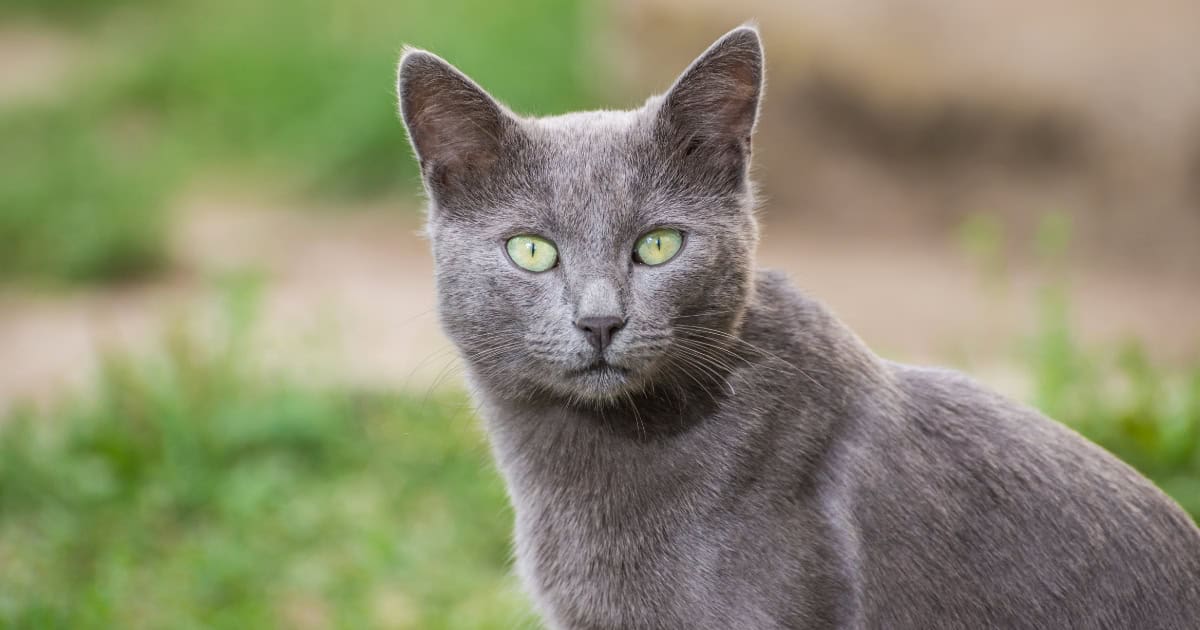
Health
Russian Blues live to be around 15 years old, although can live longer if cared for well. Some Russian Blues have lived to be 25 years old!
They are medium sized. Healthy males weigh around 6kg and healthy females around 4kg.
Overall, Russian Blues are a very healthy breed. There are no specific major health issues that concern them. This is because they are a naturally occurring breed.
Bladder stones can sometimes occur.
Obesity is a common issue in modern Russian Blues which can lead to a myriad of other health problems.
Avoid overfeeding your cat and encourage regular play time.
It can be valuable to have an annual health check up with your veterinarian to make sure no health issues arise.
When purchasing a Russian Blue, breeders and shelters should provide you with a written health guarantee, just in case.
History
Russian cats are a naturally existing breed and are not the result of humans selectively breeding cats.
They were first recorded in Russia in 1875 and given their own breed name is 1912. They were originally referred to as the ‘Archangel Cat’ because they came from the northern Russian town of Archangelsk.
Their thick coat helped them to stay warm in Russia’s cold climate.
People of all social classes owned them. Russian czars were said to have loved Russian cats.
They were believed to bring good luck so were often taken on ships to keep sailors’ company and also protected. They first arrived to Europe on these ships. They were then later imported to the USA.
During World War II, Russian Blues began to decline in numbers.
Breeders were forced to cross breed them with similar breeds, including blue Siamese and British Shorthairs.
This almost resulted in the extinction of the Russian Blue.
Luckily, following the war, breeders in the USA and Britain made efforts to breed them and successfully had them back to their original breed by the 1960s.
Active
Russian Blues have a high amount of energy. Once they feel comfortable in their environment, they love to run around, climb furniture and jump up onto high spaces.
They also love to play with toys, particularly those with feathers attached. Some will even play fetch with their humans!
Providing your Russian Blue with a cat scratching post can give it a space to jump, climb and exercise.
The Somerzby Castle Scratching Post is the perfect choice for a Russian Blue. At 130cm tall and with multiple platforms, it provides lots of space to play.
It also comes with a hanging mouse toy to keep kitty entertained. Its two bed cubes provide shelter and allow your cat to rest comfortably.
Using puzzle toys can help wear out a Russian Blue with too much energy. These toys require your cat to manipulate sections of a toy to receive food rewards.
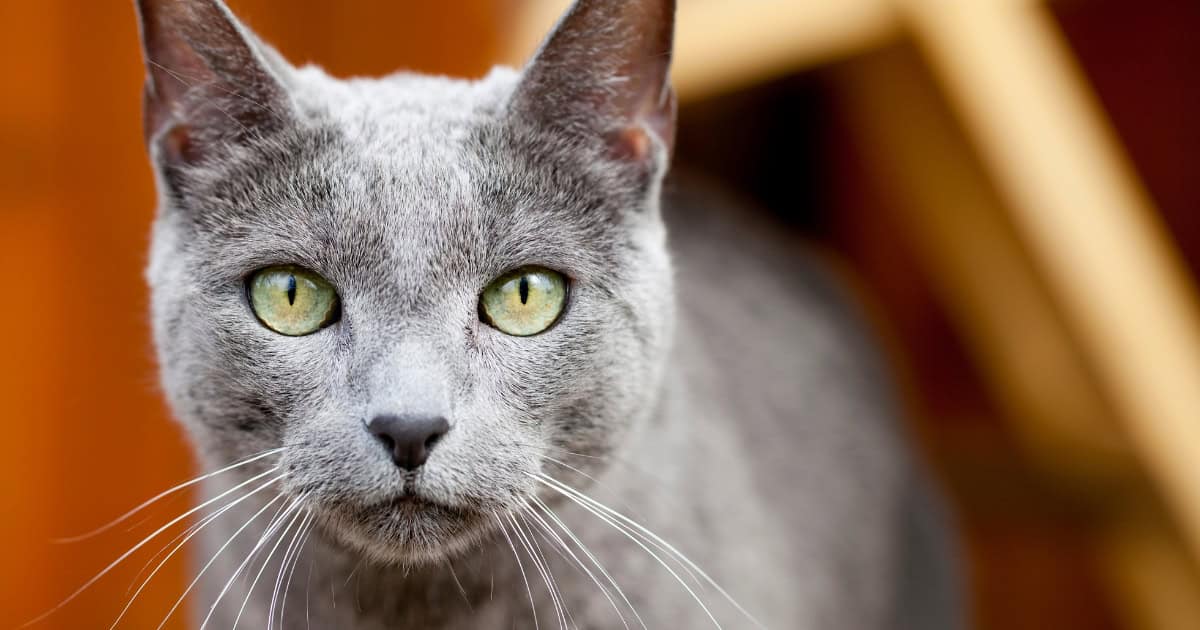
As Pets
Russian Blue cats make great companions. They will usually have 3 kittens per litter.
Their timid nature makes them suitable for people who don’t want a cat jumping on or clinging to them whilst still remaining affectionate.
They are very cautious of strangers and can take a while to bond with you. But once they do, they can be very loyal.
They will keep their distance from house guests until they have assessed whether they are trustworthy or not.
Give them plenty of time to adjust to living with you.
Russian Blues can also be scared of young children or other animals if they have never been exposed to them, cautious of any sudden movements or loud noises.
However, if they are raised around children and other pets, they will get along with them well.
They make a great pet for people who work full time as they are fairly independent and can keep themselves entertained while you are away.
Russian Blues make a moderate amount of noise however it is always at a low volume.
They appreciate routine and doing everything at the same time daily. They hate change and unpredictability. If their dinner is a little late, they will let you know!
They are a very clean breed and dislike an unclean litter box.
Feeding
To keep your Russian Blue as healthy as possible, it is important to feed it a high-quality cat food.
As they are an active and medium-sized cat, Russian Blues eat around 80Kcals of food per kg of bodyweight per day.
Beware you don’t overfeed them or give them human food too often. Always be aware of portion control!
They enjoy eating and will continue to snack even once they are full. This makes them prone to obesity and all the health problems associated with excess weight gain.
Grooming
The Russian Blue is a shorthair breed, making it very easy to groom. It does not shed much hair.
Brush its fur weekly using a short brush or comb. This will help remove any loose hair and help spread out naturally occurring skin oils.
If you start doing this regularly from a young age, your cat will learn to enjoy the attention it gets from grooming.
Brush it more during spring when it begins to shed its winter coat.
As Nebelungs have a long coat, they require brushing multiple times per week.
Like all cats, they will regularly need their teeth brushed (or given dental treats), claws clipped and ears checked.
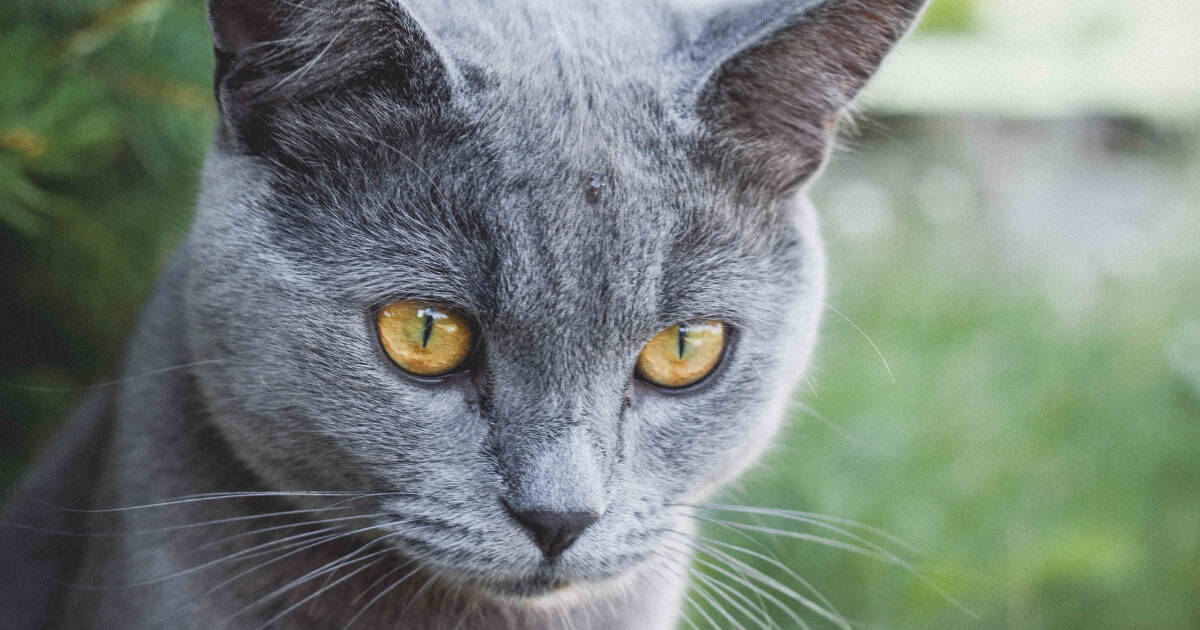
Enclosures
Russian Blues are best suited to either living inside your house or inside a cat enclosure in your yard.
Providing a cat enclosure allows your Russian Blue time outdoors in the sunshine without facing any of the risks that free roaming cats face.
These risks include being lost, hit by a car, attacked by other animals, caught in traps, facing harsh weather or contracting diseases including Feline AIDS. On average, cats in enclosures will live longer.
The Somerzby Catio Cat Enclosure is designed to allow plenty of space for your cat to play and rest whilst still being comfortable and safe.
It is almost 4 metres long and has a fully enclosed run, so your cats can explore and exercise whilst being protected from the sun or rain.
Training
Russian Blue cats are highly intelligent. Some are clever enough to open doors, drawers and maneuverer complex puzzle toys.
They can be trained to play fetch. They can also be taught tricks, including to high-five and play dead.
The best way to train Russian Blues is with patience and positive reinforcement – when they do the right thing, give them a food reward and praise them with pats and attention.
Never scold your cat when it doesn’t get the trick right. This won’t improve behaviour but will make your cat scared of you and sometimes behave worse.
Where to Buy
Once you decide that you would like to welcome a Russian Blue into your family, you will need to do some research and decide where to get one from.
Ask for recommendations from local vets, groomers and pet sitters as well as other cat owners you know.
Be patient and wait for the right kitten or cat to become available. Russian Blues are a popular breed so you may be on a waitlist for a while.
Adoption
Russian Blues can be adopted from animal shelters and rescue organisations, depending on availability.
Because they are a desirable breed, it is rare to find them in shelters and, if they are put up for adoption, they are likely to be snatched up quickly.
Shelters and rescues should provide your new cat with a health check, vaccinations, microchipping, worming and desexing. Adopting a cat will cost around $250.
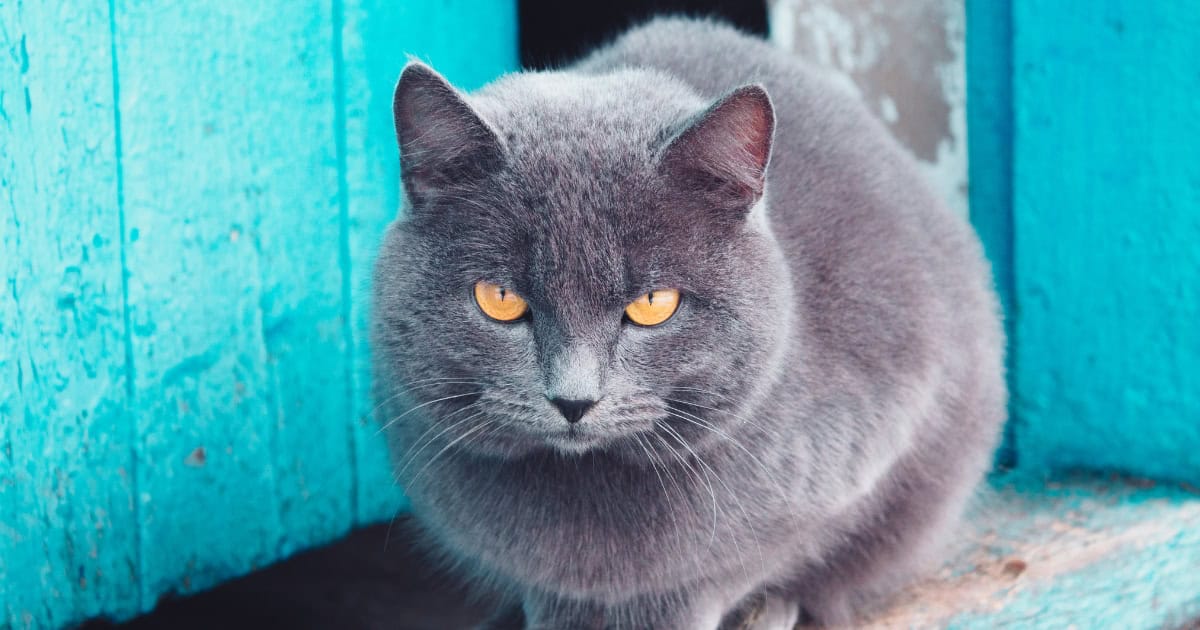
Breeders
Russian Blue cats can also be purchased from local breeders. This is typically more expensive than adopting, costing between $850 and $1,200.
Do a lot of research before choosing a breeder. Putting in effort now to find a good breeder can lead to long term benefits including a happier and healthier cat.
The Russian Cat Council of Australia provides a list of reputable breeders on their website.
If you find a breeder online, beware of online scams. Warning signs include cheap cats, always having kittens available and websites that allow you a purchase cats online using a credit card.
If it seems too convenient, it is likely that the ‘breeder’ is not trustworthy.
Once you find a breeder you like the sound of, contact them. Provide them with a brief overview of yourself and the environment you plan to raise the cat (type of house, members of your family, other pets, etc.).
Allow time for them to respond to you as they can be in high demand.
Organise to meet with them. Go to their house, see where the kittens live, check out the adult cats and ask lots of questions.
Important questions to ask include about health checks and the cat’s family history.
They should be raising the kittens inside their home and handled regularly by humans.
Kittens raised outdoors without much human contact can be harder to socialise and less affectionate.
It is important to feel comfortable with your breeder. If in doubt, listen to your instincts!
Breeders will typically sell kittens when they are 12-16 weeks old. Breeders should provide you with a written health guarantee, vaccinations, microchipping and worming.
Soon after purchasing your Russian Blue, take it to your vet for a full health check-up.




